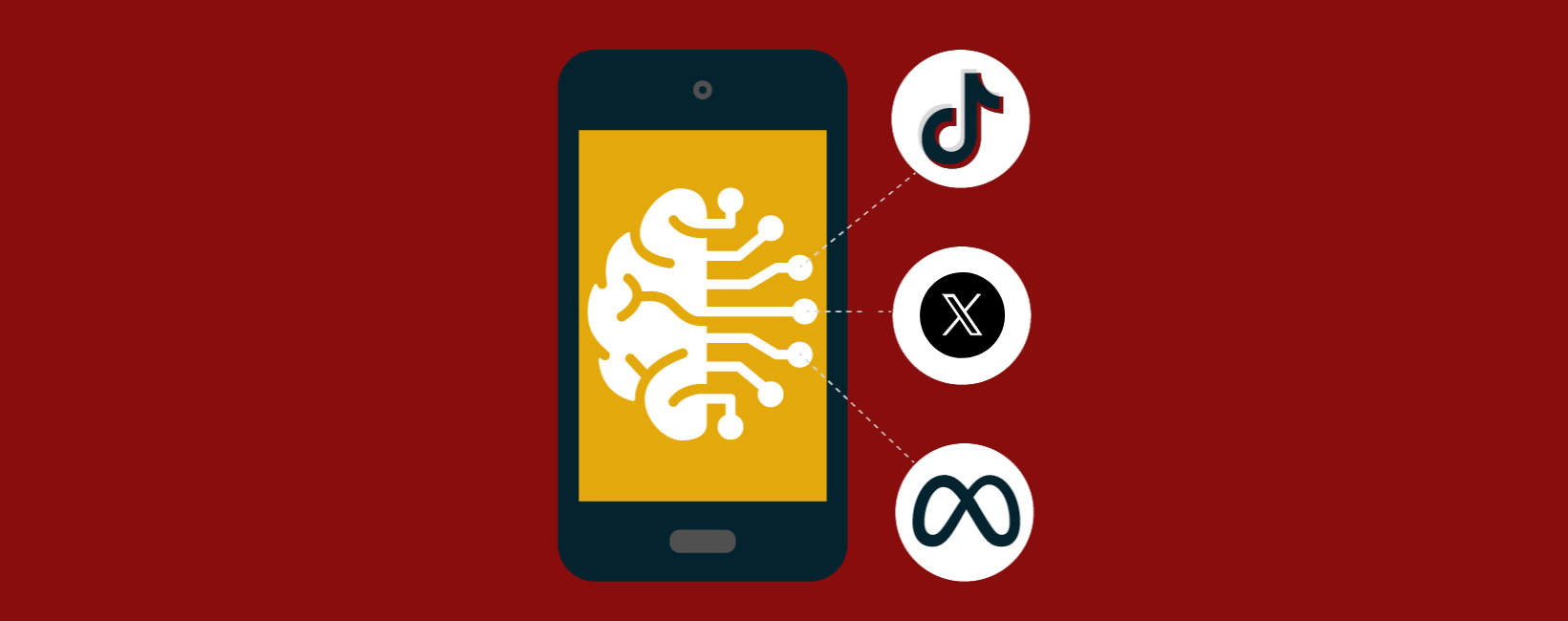 Feb 14, 2025
Persona
Feb 14, 2025
Persona
In this digital age, social media platforms are vital tools for universities and colleges to connect with prospective students. However, engaging with prospective students, many of whom are minors, comes with important privacy and safety considerations. Major platforms like Meta (Facebook and Instagram), Snapchat, TikTok, and LinkedIn have recognized these challenges and implemented robust safety measures to protect young users.
For higher education marketers, navigating these safety features while creating engaging content requires a delicate balance—one that’s essential for building trust with prospective students and their families while maintaining institutional integrity. This guide explores how each platform approaches minor safety, offering insights into how universities can leverage these features while maintaining effective outreach strategies.
Check out our post on how to use AI to turbocharge your social media campaigns, where we share the best tools to help your institution save time and money.
Meta Platforms: Family-Centered Privacy and Safety
Meta’s ecosystem, which includes Facebook and Instagram, offers resources and tools through its Family Center. Parents can set up controls and monitor their teen’s social media activity, including time limits, privacy settings, and interactions.
Meta has also implemented additional safety features on both Facebook and Instagram to ensure students stay safe while browsing on the platforms.
Facebook’s Safety Features for Minors
- Ad restrictions: Targeted advertising based on activity or interests is limited to users under 18.
- Age Restrictions: Meta verifies user age to prevent children under 13 from creating accounts.
- Privacy Settings: Accounts of minors are automatically set to more restrictive privacy settings.
Instagram’s Safety Features for Minors
- Age-based Content Moderation: Instagram implements stricter guidelines for the type of content that minors can see, including limiting sensitive content.
- Private by Default: New accounts for users under 16 are private by default.
- Restricted Messaging: Adults cannot message teens who don’t follow them.
- Restricted Settings Permissions: Teens under 16 will need a parent’s permission to change their settings.
Snapchat: Privacy by Design
Snapchat’s architecture inherently promotes safe user interactions, making it an excellent platform for authentic student engagement. The platform’s emphasis on one-to-one communication naturally limits exposure to unknown users, while its curated content approach helps maintain a safer environment.
In addition, Snapchat has a Parent’s Guide aimed at helping adults understand how their teens use Snapchat. It includes details on creating a Family Center, using location sharing, and a safety checklist.
Safety measures for users under 18 include:
- Location Privacy: Default-disabled location sharing.
- Content Curation: The Discover page content is regulated to limit the display of harmful content.
- Misinformation Control: Built-in misinformation prevention through lack of an open newsfeed.
TikTok: Teen Safety Through Family Engagement
TikTok has been in the news a lot lately with the impending TikTok ban. While the platform is still up and running, the app continues to offer safety measures for young users through its Guardian’s Guide, which empowers parents to actively participate in their teens’ digital experience. In addition, the Family Pairing feature allows parents to link a parent and child’s accounts to manage screen time, view direct messages, and set content restrictions.
Other key safety features for users under 18 include:
- Privacy Settings: Automatic private account settings
- Messaging Controls: Restricted access to messaging features to prevent unwanted contact
- Content Filtering: Limited exposure to mature content
- Feature Restrictions: Disables Duets and Stitch features to maintain user safety and privacy
LinkedIn: Professional Environment for Older Teens
While LinkedIn is mostly geared towards professionals, the platform is still available to younger users. LinkedIn sets itself apart with a minimum age requirement of 16, as well as restricting some features for users aged 16-18, such as advertisements, notifications, and messages.
The site’s professional focus creates an inherently more controlled environment for young users. For marketers, this makes it particularly valuable for reaching college-bound high school students who are looking to make professional and educational connections.
Best Practices for Higher Education Marketers
When engaging with prospective students through social media, consider these guidelines:
1. Create Age-Appropriate Content that Meets Privacy Settings
Develop content that resonates with prospective students while adhering to platform-specific privacy guidelines. Focus on educational or entertaining videos that are relatable and shareable, encouraging organic reach.
For example, a TikTok campaign might highlight a unique campus tradition or showcase student life through quick, engaging clips. Looking for inspiration? Read our post on what colleges are posting on their TikTok accounts.
2. Target the Parents
Parents often play a significant role in college decisions—and they’re active on social media too! Tailor content that appeals to them, such as posts about academic programs, alumni success, or financial aid tips. By capturing their interest, you might even encourage them to share your content with their children.
3. Communicate With Your Institution
Be transparent with your institution about the safety measures and targeting limitations on social platforms. Clearly communicate how privacy restrictions may affect campaign strategies to avoid misunderstandings. Aligning expectations early allows for smoother planning and more successful execution.
4. Stay Up-to-Date on Privacy Policy Changes
Social media platforms frequently update their privacy policies and safety features, influenced by both internal initiatives and external regulations. Staying informed is crucial for compliance and effective outreach. Regularly monitor official platform blogs and news about emerging privacy laws to adapt your strategies accordingly.
Understanding and leveraging social media safety features isn’t just about compliance—it’s about showing your institution’s commitment to student well-being. By following these best practices, you can create campaigns that are engaging, responsible, and impactful.
Partner with Carnegie to Build Safer, Smarter Campaigns
Want to create social media campaigns that are both engaging and compliant? Reach out and start a conversation to learn how we can help your institution create impactful, secure marketing strategies tailored to the unique needs of higher education marketing.
